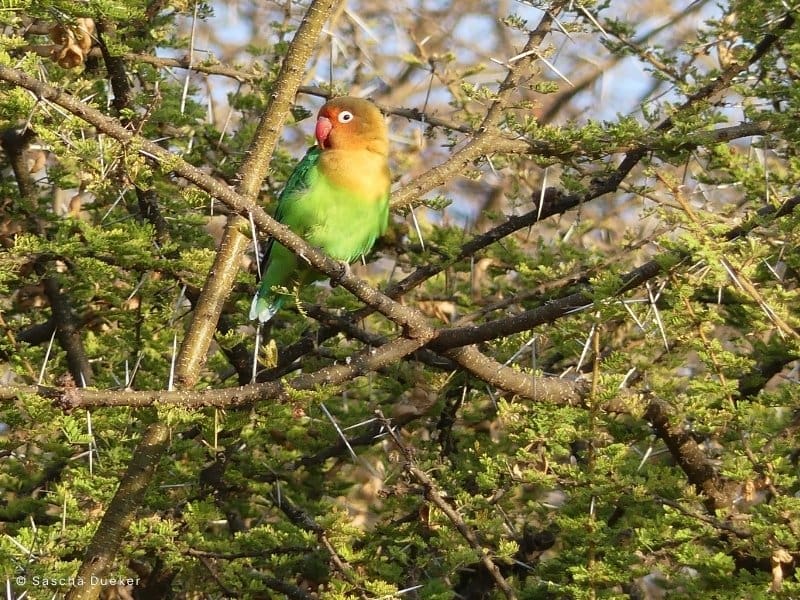Sequencing of full genomes of Lovebirds paves the way for conservation science
World Parrot Trust scientists, working with the University of KwaZulu-Natal, University of Chicago and Iridian Genomes, have just published the complete genomes of all nine living Lovebird species. A genome is the full set of genetic instructions found in a living organism, and having access to this information can reveal how species are related, how they’ve evolved, and what they may need to survive into the future.
These genomes were sequenced using wild-sourced samples that are geo-referenced, meaning researchers know exactly where each sample came from. This provides a crucial foundation for understanding the genetic health and long-term viability of Lovebirds in the wild, specifically for the four eye-ringed species found in southern and eastern Africa: Black-cheeked Lovebirds, Lilian’s Lovebird, Fischer’s Lovebirds and Yellow-collared Lovebirds.
These wild populations still face many challenges, including trapping for the pet trade, habitat loss, climate change, and disease. This research will help scientists assess how connected wild populations are, how much hybridisation is taking place (when individuals from two different species breed with each other), and what conservation steps are most urgent.
The study is now available in Nature and the data is publicly accessible, opening the door to further research and stronger protection for these much-loved parrots. Read the full paper in Nature
Learn more about Lovebird conservation in this review published last year in Ostrich: The Journal of African Ornithology
Or read more in the World Parrot Trust’s quarterly PsittaScene magazine issue’s Winter 2023 & Summer 2022

